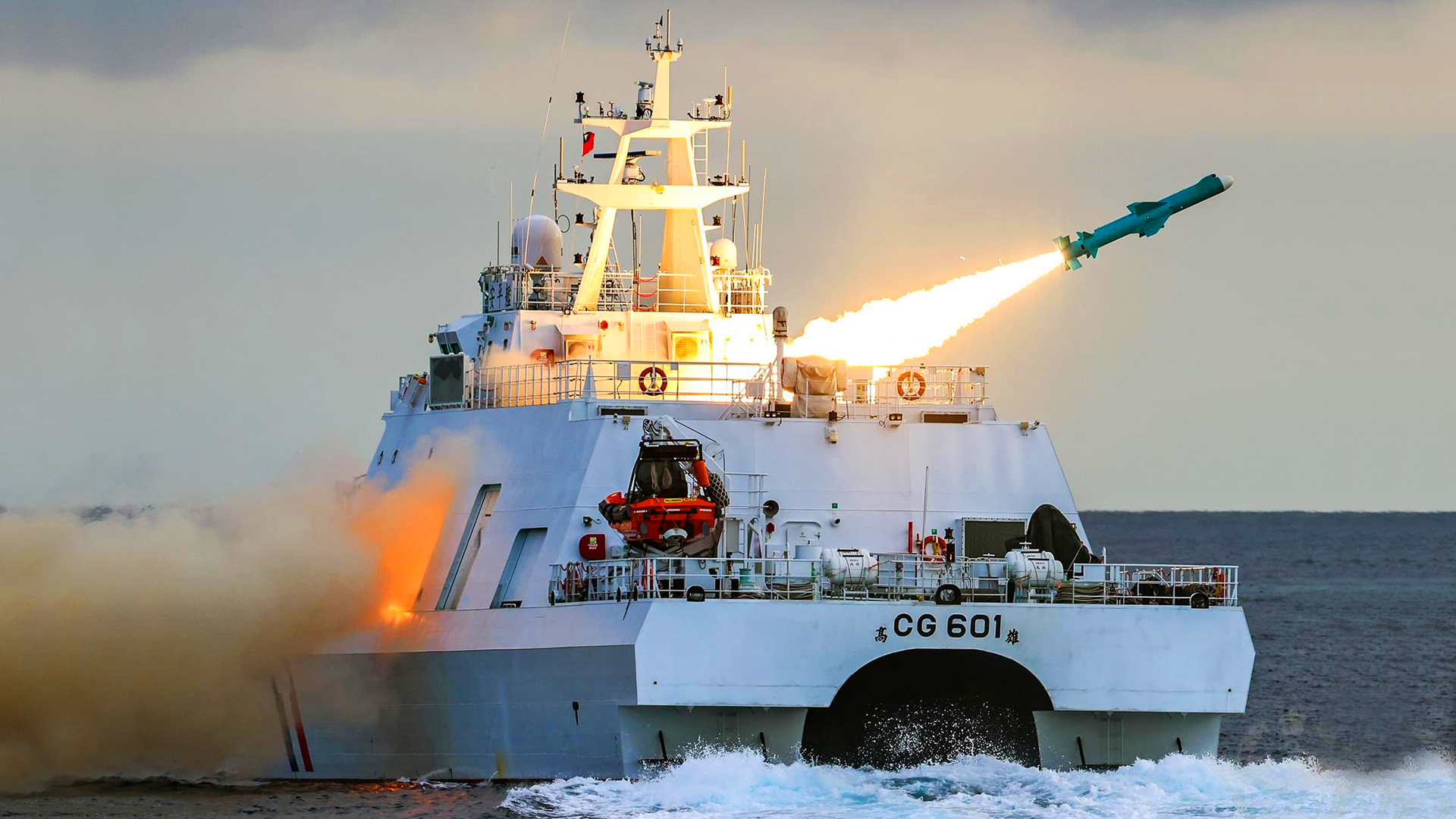The Taiwan Coast Guard’s CG-601 Anping-class catamaran patrol ship has participated in a demonstration that showcased the ability to reconfigure this class of ships to fire HF-2 anti-ship missiles. The exercise highlights the design similarities between these Coast Guard vessels and the Taiwan Navy’s catamarans, as well as the ship’s ability to allow for the relatively rapid addition of anti-ship missiles, which could help bolster the country’s naval capabilities in their developing defense strategy against China.
In early May, Taiwan’s military reported that the Coast Guard’s 600-ton cutter was undergoing an installation of the HF-2 anti-ship missile system for use in upcoming live-fire drills. The announcement went on to claim that the vessel is the first Coast Guard ship to be equipped with the Taiwan Navy’s launch architecture and fire control system.
The HF-2, or Hsiung Feng II, is a subsonic anti-ship missile produced by the National Chung-Shan Institute of Science and Technology in Taiwan that is very roughly equivalent to the RGM-84 Harpoon. Development of the missile system began in the early 1980s, and it is reported to have entered service in 1990. It is designed with the ability to take out targets on both land and at sea, with the latter being the weapon’s primary focus, and has an operating range of about 75 miles. The HF-2’s supersonic relative, the HF-3, is Taiwan’s newest addition to the Hsiung Feng cruise missile family. It can also be fitted to the Anping-class catamarans. You can read more about the HF-3 here.
During the test conducted on May 23, officials said that the HF-2 missiles were launched from the cutter off the coast of the Jiupeng Base and successfully hit a target ship that was located 62 miles off the coast of Lanyu, near Orchid Island. According to Taiwan’s Liberty Times Net reporter Zheng Jingyi, “this live ammunition firing specifically verifies the integration of the naval forces and sea cruisers under the ‘peace-to-war conversion.’”
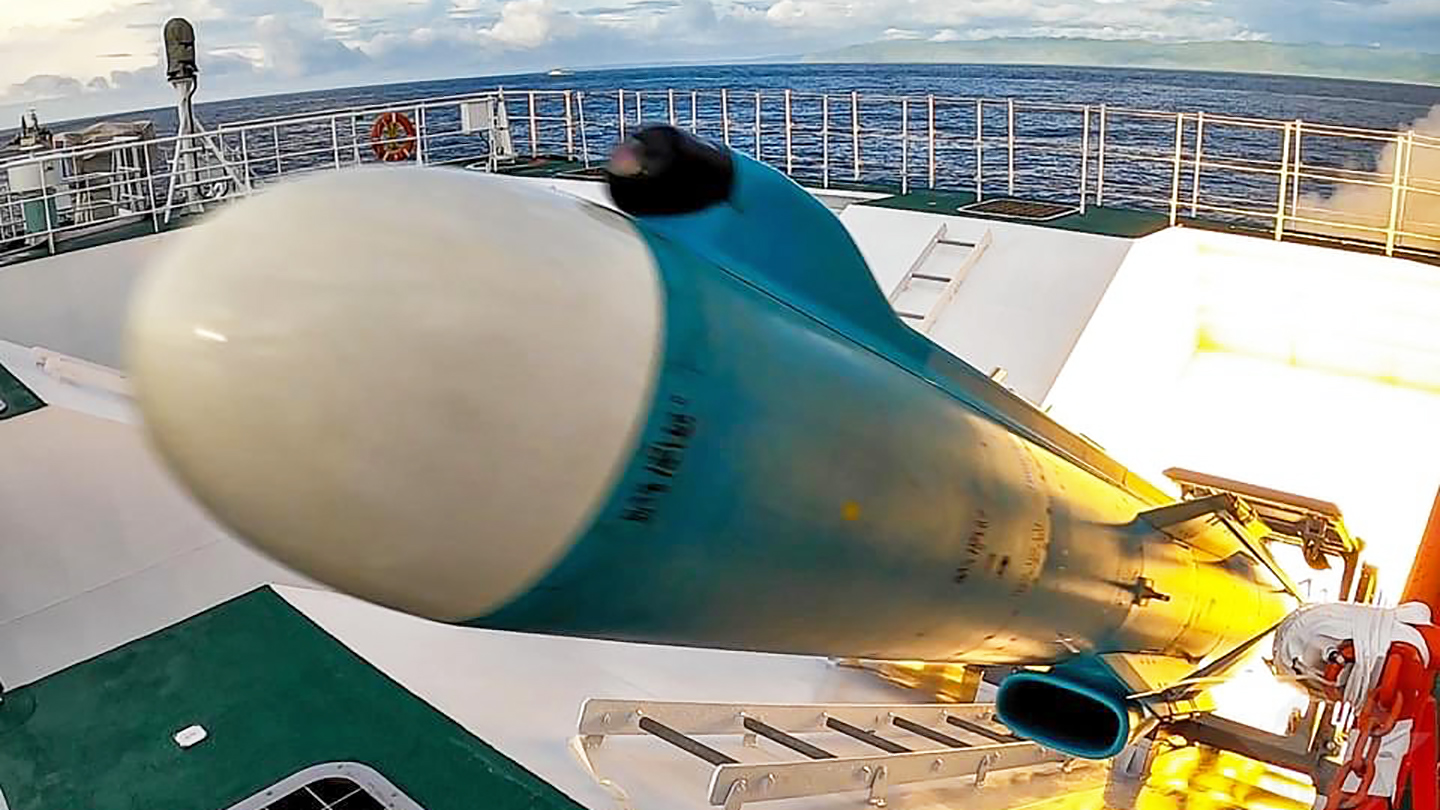
Jingyi then went on to explain that the ship is also equipped with a Zhenhai rocket system in addition to the reserved space for anti-ship missile launch boxes. The Zhenhai rocket system, however, is a multiple rocket launch system that uses 2.75/70mm rockets and is mounted on the bow of the cutter. These ships also have two 20mm cannons in two separate remote weapon stations.
“In wartime,” Jingyi continued, “the [HF] series of anti-ship missiles can be installed immediately, and the navy will send a group of missile operators and non-commissioned officers to board the ship to perform tasks.”
The Anping class of offshore patrol vessels, which are optimized for high-speed littoral operations, reaching top speeds of 44 knots, are manufactured by Jong Shyn Shipbuilding Company and are based on the Tuo Chiang-class missile corvette of the Republic of China Navy. However, Anping-class vessels are more lightly armed than the parent design, as they are missing the Chinese corvette’s 76mm main gun among other weaponry. Construction of the first ship began in 2019, and the vessels have since carried out typical peacetime law enforcement missions.
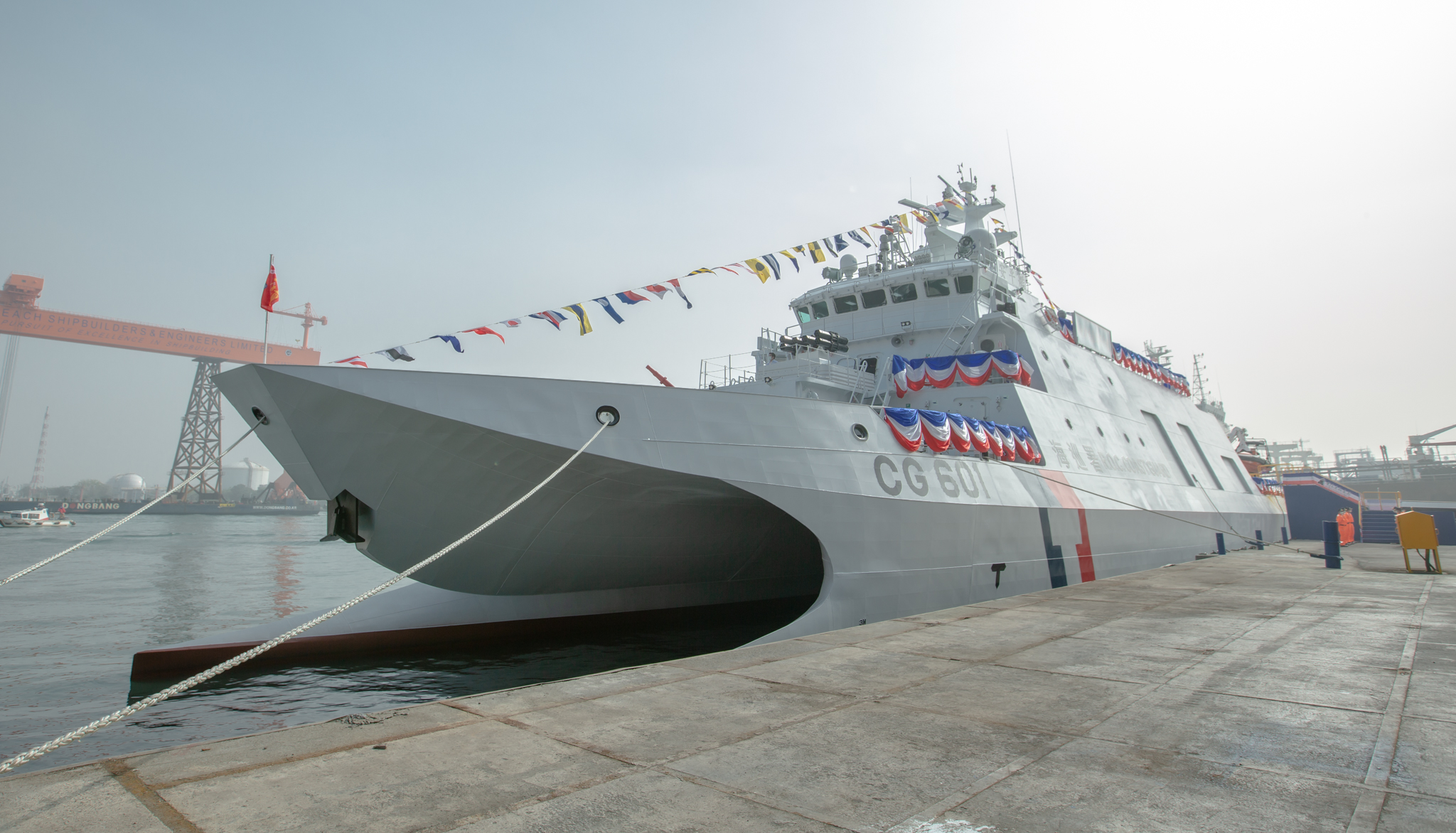
The idea to design the Anping class with the fittings and space necessary to equip the vessels with HF-2 and HF-3 anti-ship missile systems was part of the plan from the beginning and is helped by the ship’s significant relationship to the Navy’s missile corvette. The Tuo Chiang fleet is made up of fast multi-mission corvettes that were developed beginning in 2010. The catamaran is equipped with a total of 16 anti-ship missiles.
Arming Coast Guard vessels with anti-ship missiles isn’t completely unheard of. Even the United States outfitted a handful of the U.S. Coast Guard’s Hamilton class cutters with RGM-84 Harpoon anti-ship missiles for a period of time. You can read all about this unique capability in this past feature of ours.
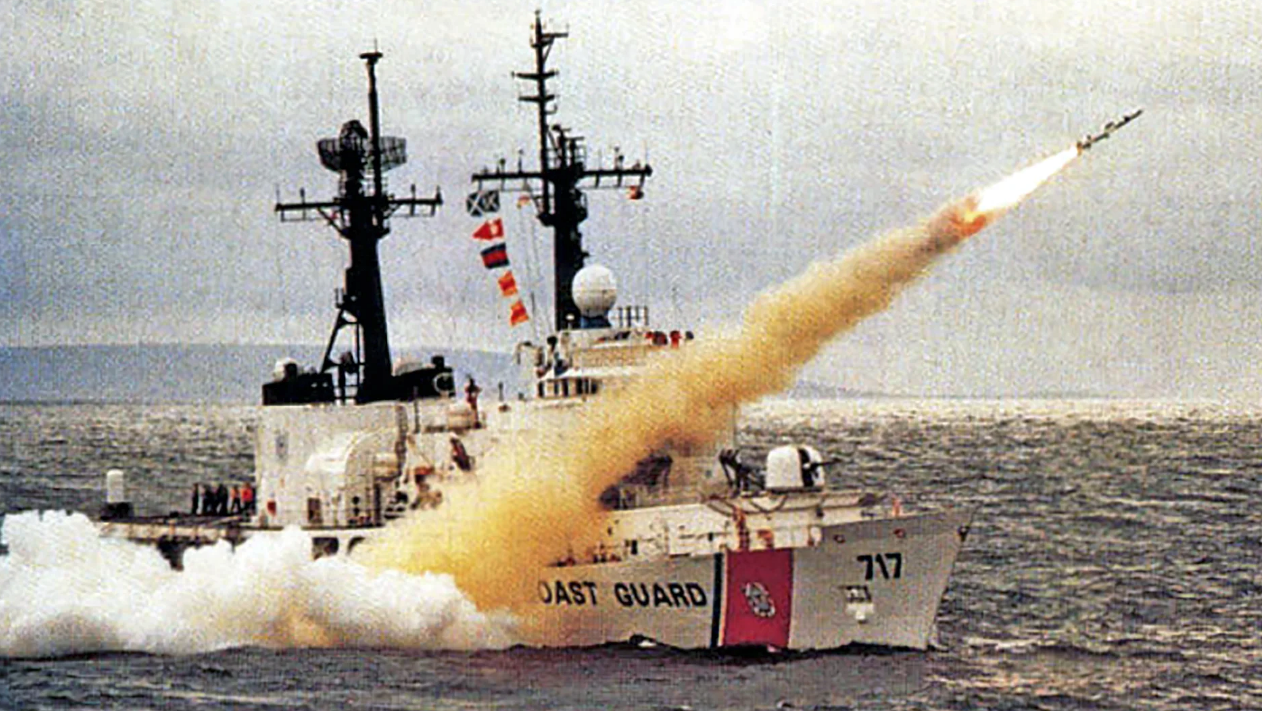
With the recent demonstration highlighting how successful an HF-2 missile system can be on an Anping-class cutter, the Taiwanese military now has more proof that smaller and cheaper missile boats can be employed in the country’s defense against China if a conflict is to unfold. That is beyond demonstrating that these Coast Guard vessels could contribute more significantly to a conflict such as a Chinese invasion.
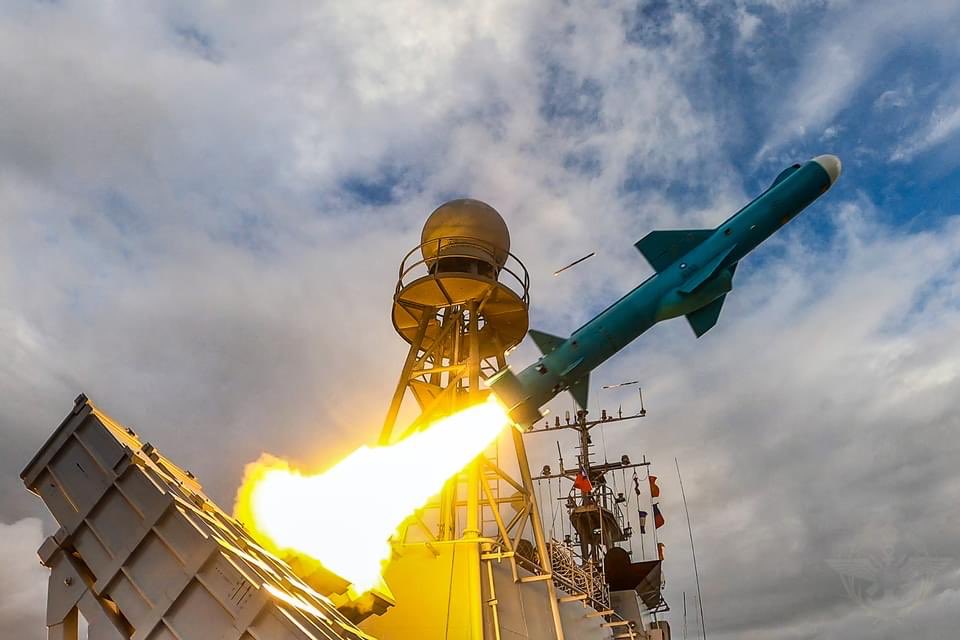
China’s armed forces dwarf Taiwan’s in size, and the technology that underpins it is increasingly advanced, pulling away, in some qualitative cases, from parity with Taiwan’s arsenal. Second only to the United States, China’s defense budget is higher than every other country’s. According to USNI News, China’s Navy is working with around 355 ships as opposed to Taiwan’s 49, including Coast Guard vessels. This makes it so the increased number of anti-ship missiles that the Coast Guard cutters could provide would be a critical addition to Taiwan’s defense.
Only four of Taiwan’s 49 ships make up the Anping-class cutters currently in use with the coast guard. While Taiwanese news sources have mentioned that the Coast Guard plans to buy an additional 12 vessels, the timeline for that acquisition is currently unclear. The commonality that the Anping-class cutters share with the Navy’s Tuo Chiang-class corvette would allow for better scalability and economies of scale in terms of sustainment and upgrades if Taiwan orders the extra dozen ships.
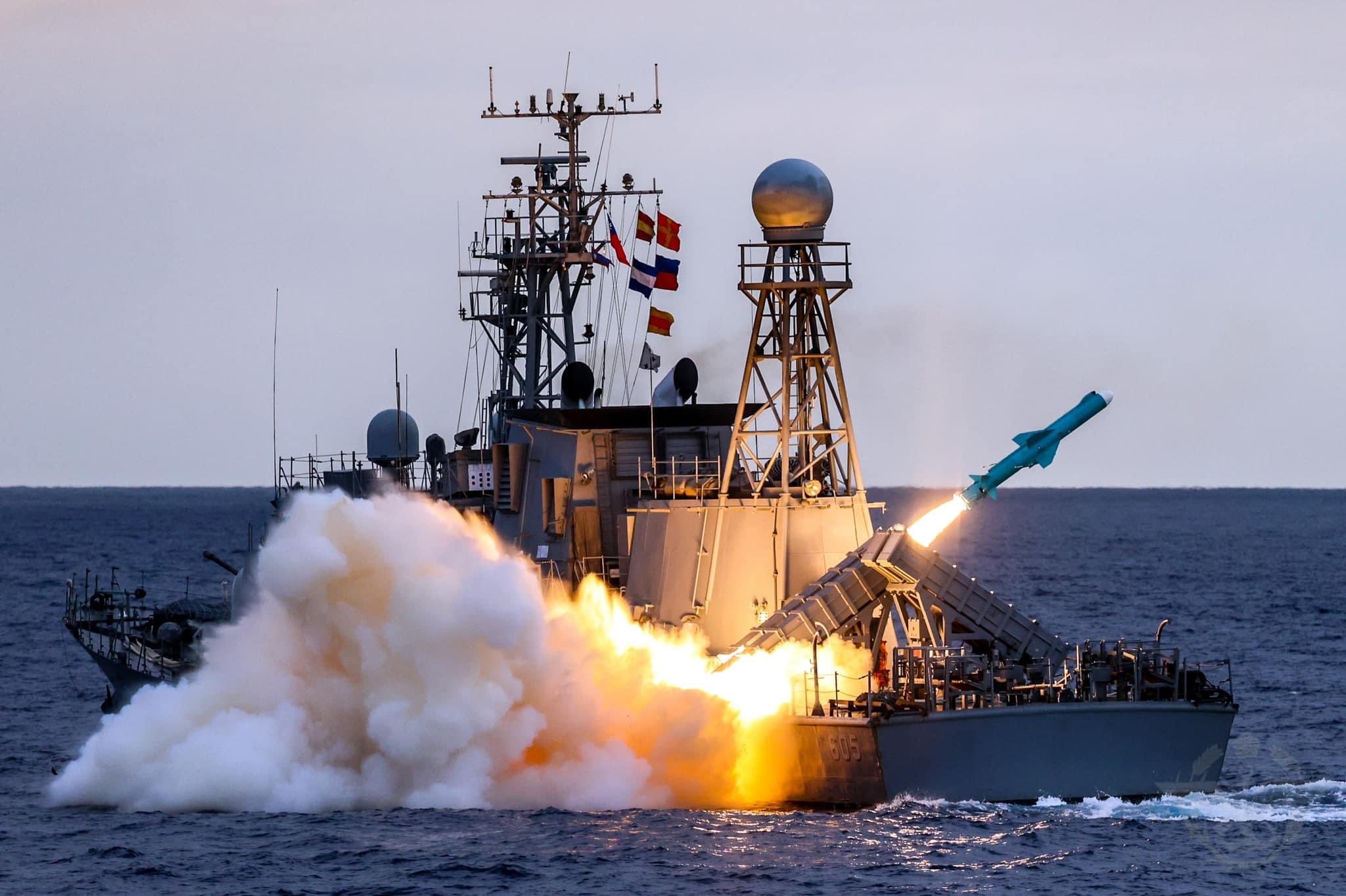
Another important caveat is that it’s not completely obvious how long it takes to add the missiles to the cutters. Some sources say that it’s designed to be relatively easy, but it still has to be done.
If China decides to initiate a surprise attack, it’s uncertain if there will be enough time to fully equip the Anping class with the HF-2s. That said, Taiwan appears to be readily preparing for the worst-case scenario and any future warning signs could see these ships up-armed out of caution.
Contact the author: Emma@thewarzone.com
